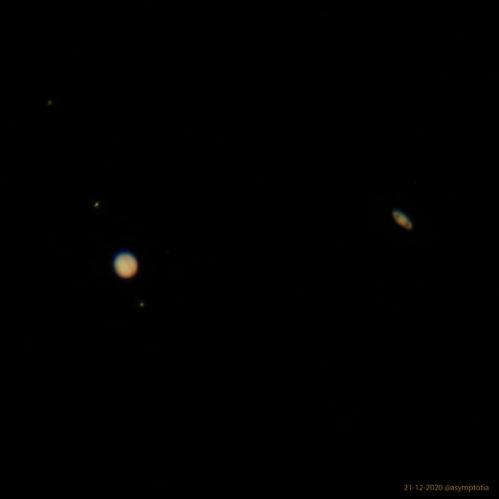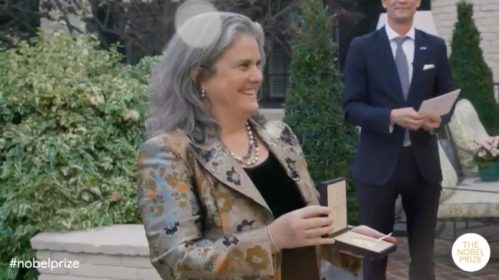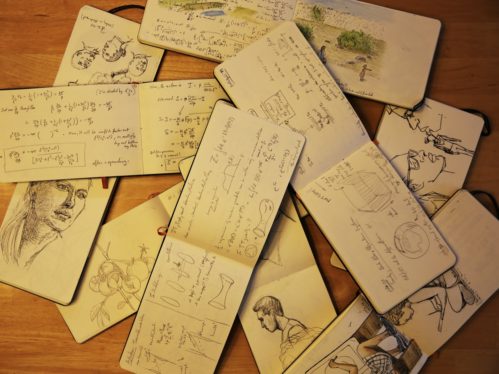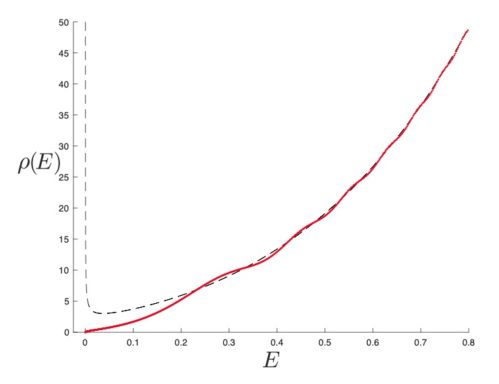[caption id="attachment_19517" align="aligncenter" width="499"] Sharing my live virtual chalkboard while online teaching using Zoom (the cable for the iPad is for power only).[/caption]It is an interesting time for all of us right now, whatever our walk of life. For those of us who make our living by standing up in front of people and talking and/or leading discussion (as is the case for teachers, lecturers, and professors of various sorts), there has been a lot of rapid learning of new techniques and workflows as we scramble to keep doing that while also not gathering in groups in classrooms and seminar rooms. I started thinking about this last week (the week of 2nd March), prompted by colleagues in the physics department here at USC, and then tested it out last Friday (6th) live with students from my general relativity class (22 students). But they were in the room so that we could iron out any issues, and get a feel for what worked best. Since then, I gave an online research seminar to the combined Harvard/MIT/USC theoretical physics groups on Wednesday (cancelling my original trip to fly to the East Coast to give it in person), and that worked pretty well.
Sharing my live virtual chalkboard while online teaching using Zoom (the cable for the iPad is for power only).[/caption]It is an interesting time for all of us right now, whatever our walk of life. For those of us who make our living by standing up in front of people and talking and/or leading discussion (as is the case for teachers, lecturers, and professors of various sorts), there has been a lot of rapid learning of new techniques and workflows as we scramble to keep doing that while also not gathering in groups in classrooms and seminar rooms. I started thinking about this last week (the week of 2nd March), prompted by colleagues in the physics department here at USC, and then tested it out last Friday (6th) live with students from my general relativity class (22 students). But they were in the room so that we could iron out any issues, and get a feel for what worked best. Since then, I gave an online research seminar to the combined Harvard/MIT/USC theoretical physics groups on Wednesday (cancelling my original trip to fly to the East Coast to give it in person), and that worked pretty well.
But the big test was this morning. Giving a two hour lecture to my General Relativity class where we were really not all in the same room, but scattered over the campus and city (and maybe beyond), while being able to maintain a live play-by-play working environment on the board, as opposed to just showing slides. Showing slides (by doing screen-sharing) is great, but for the kind of physics techniques I’m teaching, you need to be able to show how to calculate, and bring the material to life – the old “chalk and talk” that people in other fields tend to frown upon, but which is so essential to learning how to actually *think* and navigate the language of physics, which is in large part the diagrams and equations. This is the big challenge lots of people are worried about with regards going online – how do I do that? (Besides, making a full set of slides for every single lecture you might want to do For the next month or more seems to me like a mammoth task – I’d not want to do that.)
So I’ve arrived at a system that works for me, and I thought I’d share it with those of you who might not yet have found your own solution. Many of the things I will say may well be specific to me and my institution (USC) at some level of detail, but aspects of it will generalize to other situations. Adapt as applies to you.
Do share the link to this page with others if you wish to – I may well update it from time to time with more information.
Here goes:
[…] Click to continue reading this post →
 Jupiter (with some moons) and Saturn, 21st December 2020 (click for larger view) [/caption]
Jupiter (with some moons) and Saturn, 21st December 2020 (click for larger view) [/caption]










